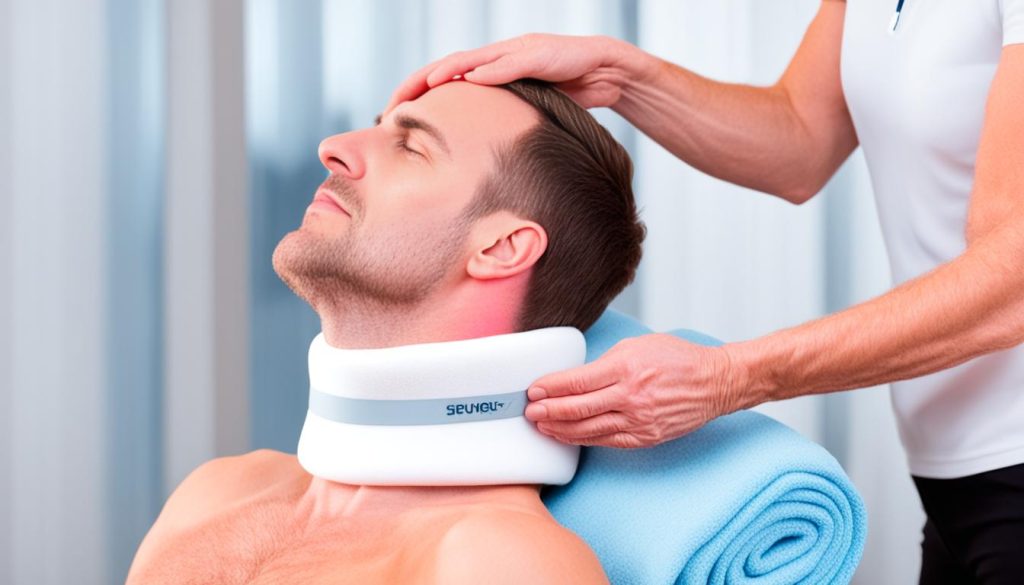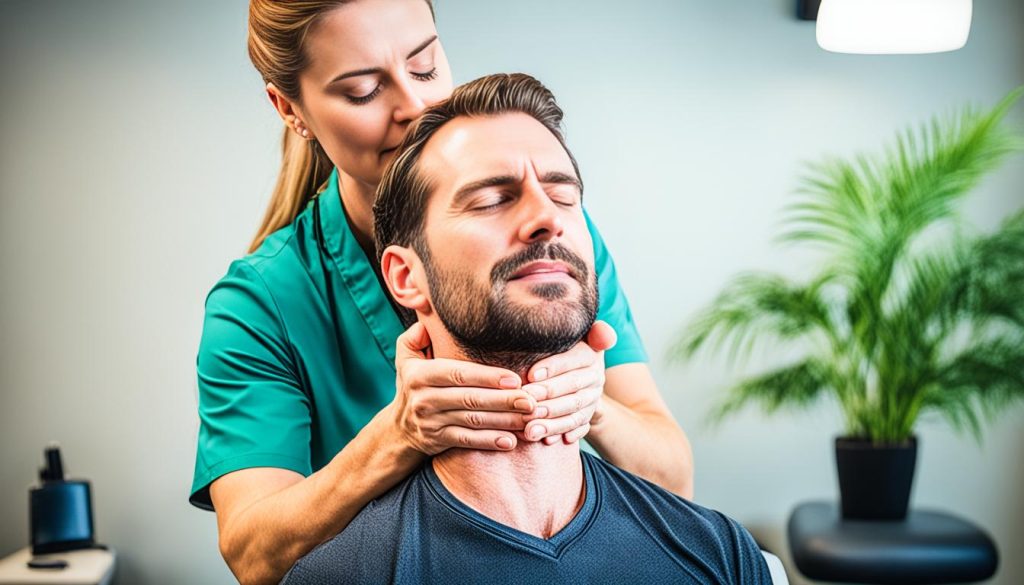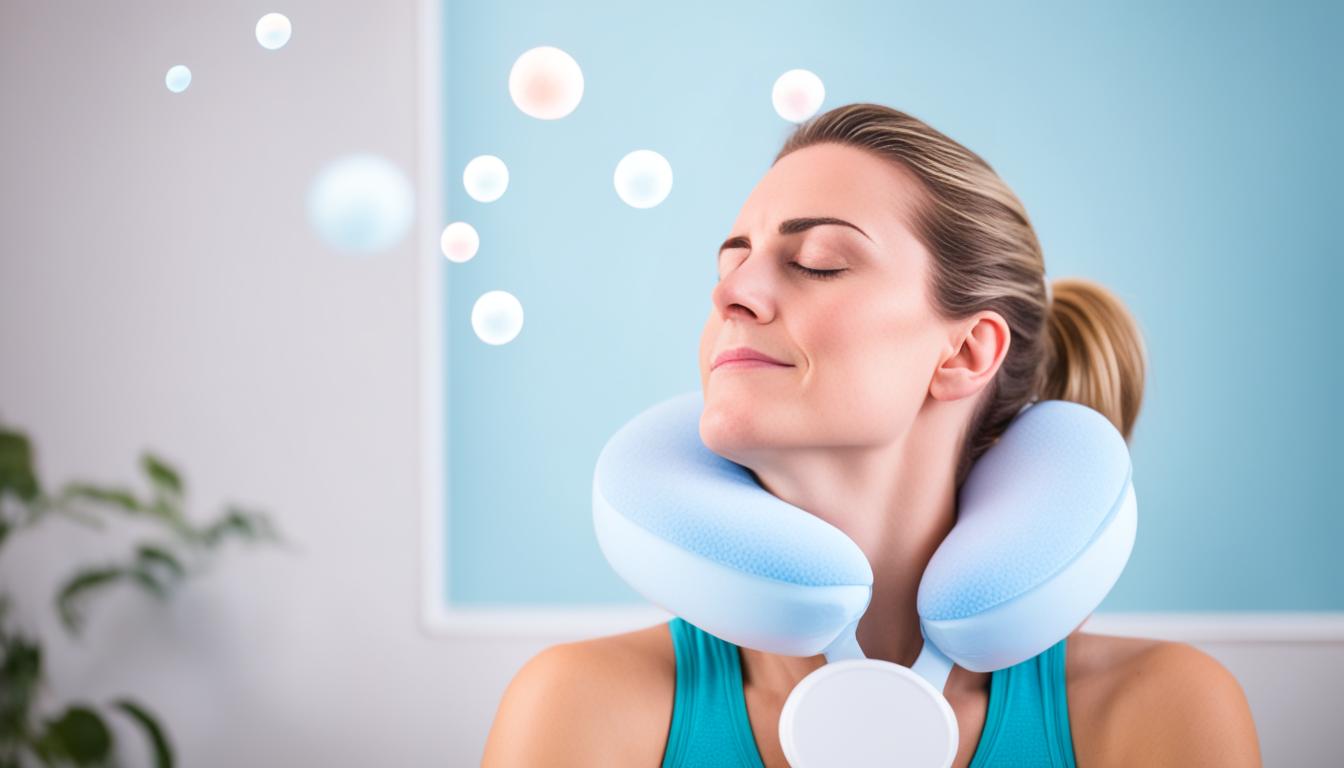A crick in the neck can be a painful and uncomfortable experience, making it difficult to perform everyday activities. Whether it’s caused by poor posture, sleeping in an awkward position, or muscle strain, finding relief from a neck crick is essential for getting back to your regular routine.
In this article, we will explore various methods to provide quick and effective relief from a crick in your neck. From targeted stretches and at-home remedies to professional treatments, we will cover everything you need to know to alleviate the discomfort and stiffness associated with a crick in the neck.
So, if you’re tired of being held back by the nagging pain of a neck crick, keep reading for valuable tips and tricks on how to get rid of it.
How to Get Rid of a Crick in Your Neck?
A crick in the neck refers to the stiffness and immobility felt in the cervical spine. It can be accompanied by symptoms such as reduced range of motion and a popping sensation in the neck. Neck cricks can be caused by factors like poor sleeping position and prolonged poor posture.
Stretching exercises, like neck tilts and head tilts, can help relieve the stiffness and provide relief from a crick in the neck.
Common Symptoms of a Crick in Neck:
- Stiffness and immobility in the neck
- Reduced range of motion
- Popping sensation in the neck
Possible Causes of Neck Cricks:
- Poor sleeping position
- Prolonged poor posture

Stretching exercises, like neck tilts and head tilts, can help alleviate neck cricks and provide relief from discomfort. Consult a healthcare professional for personalized advice and guidance on neck pain relief exercises.
Simple Stretches to Get Rid of a Crick in Neck
If you’re experiencing a crick in your neck, there are several simple stretches that can provide relief and help alleviate the discomfort. These stretches target the neck muscles, helping to reduce tension and stiffness.
1. Neck Tilts: Start by sitting or standing with your back straight and shoulders relaxed. Gently tilt your head to one side, bringing your ear towards your shoulder. Hold this position for 15-30 seconds, then repeat on the other side. Perform this stretch 2-3 times on each side.
2. Shoulder Rolls: Stand or sit with your back straight and shoulders relaxed. Roll your shoulders forward in a circular motion, making full rotations. After 5-10 rotations, reverse the direction and roll your shoulders backward. Repeat this exercise for 1-2 minutes to help release tension in the neck and shoulders.
3. Head Tilts: Begin by sitting or standing with your back straight and shoulders relaxed. Tilt your head forward, bringing your chin towards your chest. Hold this position for 15-30 seconds, then tilt your head backward, looking towards the ceiling. Repeat this stretch 2-3 times, alternating between forward and backward tilts.
4. Upper Trapezius Stretch: Sit or stand with your back straight and shoulders relaxed. Place one hand behind your back, gripping the opposite wrist. Gently tilt your head to the side, bringing your ear towards your shoulder on the same side. Hold this position for 15-30 seconds, feeling a stretch along the side of your neck and shoulder. Repeat on the other side, performing this stretch 2-3 times on each side.
Remember to perform these stretches slowly and gently, without forcing any movement. If you feel pain or discomfort during any of these exercises, stop immediately and consult with a healthcare professional.

These simple stretches can be repeated multiple times throughout the day to provide relief from a crick in the neck. Incorporating them into your daily routine can help reduce muscle tension and prevent future occurrences of neck cricks.
The Benefits of Chiropractic Care for Neck Pain
If home remedies and stretches do not provide sufficient relief, chiropractic care can be a beneficial option for treating a crick in the neck. Chiropractors are trained to diagnose and treat musculoskeletal conditions, including neck pain. They use various techniques to address the root cause of the pain and provide effective neck pain relief.
Chiropractic treatments for neck pain typically include:
- Manual therapy: Chiropractors use manual manipulation techniques to restore joint mobility, reduce inflammation, and alleviate pain in the neck.
- Stretching: Specific stretching exercises may be recommended to improve flexibility and reduce muscle tension in the neck.
- Relaxation techniques: Chiropractors may teach relaxation techniques to help patients relieve stress and tension in the neck muscles, promoting neck pain relief.
- Chiropractic adjustments: These adjustments help realign the spine, improving overall posture and relieving pressure on the neck muscles.
- Chronic pain management: Chiropractors can provide long-term management strategies and lifestyle modifications to prevent future neck pain.
If you’re looking for professional crick in neck treatment, Advanced Chiropractic and Rehab is a reputable clinic that offers specialized care for neck pain relief and neck muscle strain relief. They have skilled chiropractors who provide personalized treatments to address your specific needs and provide effective relief from neck pain.

Chiropractic care can be an excellent alternative or complementary treatment to traditional medical approaches for relieving neck pain. It offers a holistic approach that aims to address the underlying causes of the pain rather than just masking the symptoms. If you’re experiencing neck pain and seeking effective relief, consider consulting with a chiropractor to explore the benefits of chiropractic care.
At-Home Remedies and Treatments for Neck Cricks
In addition to professional help, there are various at-home remedies and treatments that can provide quick relief from neck cricks. These simple and accessible solutions can help alleviate pain and discomfort, allowing you to regain mobility and go about your daily activities with ease. Here are some effective methods to consider:
Applying Ice and Heat
One of the quickest neck crick fixes is alternating between applying ice and heat to the affected area. Apply an ice pack wrapped in a thin cloth for about 15 minutes to reduce swelling and inflammation. Then, follow up with a warm compress or hot water bottle to relax the muscles and improve blood circulation.
Taking Over-the-Counter Pain Relievers
If you’re experiencing moderate to severe pain, over-the-counter pain relievers such as ibuprofen or acetaminophen can provide temporary relief. Always follow the recommended dosage and consult a healthcare professional if you have any concerns or pre-existing medical conditions.
Gentle Stretching
Gentle stretching exercises can help relieve tension and stiffness in the neck muscles. Slowly tilt your head in different directions, hold each position for a few seconds, and repeat several times throughout the day. Remember to perform the stretches in a slow and controlled manner to avoid exacerbating the crick.
Massage
Massage therapy is another effective neck crick treatment that you can do at home. Using your fingertips or a massage ball, apply gentle pressure to the sore areas in circular motions. This can help relax the muscles and promote blood flow to the affected area. If possible, seek assistance from a licensed massage therapist for professional guidance.
Modifying Bedding and Using a Soft Neck Collar
Improper bedding and pillows that do not provide adequate support can contribute to neck cricks. Consider using a supportive pillow that keeps your neck aligned with your spine while sleeping. Additionally, using a soft neck collar can provide extra support and relieve strain on the neck muscles.
Maintaining Good Posture
Practicing good posture throughout the day is crucial in preventing future neck cricks. Avoid slouching and ensure that your workspace is ergonomically designed to promote proper alignment. Take regular breaks to stretch and relax your neck and upper back muscles.
While these at-home remedies and treatments can provide relief, it’s essential to consult with a healthcare professional if your symptoms worsen or persist. They will be able to assess your condition and recommend appropriate further care or interventions.
| Treatment Method | Description |
|---|---|
| Applying Ice and Heat | Alternating between ice and heat can reduce inflammation and relax the muscles. |
| Taking Over-the-Counter Pain Relievers | Over-the-counter pain relievers can provide temporary relief from neck crick pain. |
| Gentle Stretching | Performing gentle neck stretches can help alleviate tension and improve flexibility. |
| Massage | Massaging the neck muscles can relax tension and promote blood circulation. |
| Modifying Bedding and Using a Soft Neck Collar | Adjusting bedding and using a soft neck collar can provide additional support and prevent strain on the neck. |
| Maintaining Good Posture | Practicing proper posture can alleviate stress on the neck and reduce the risk of future neck cricks. |
Preventing Neck Cricks
To minimize the risk of getting a crick in the neck, it is important to incorporate certain preventive measures into your daily routine. By following these suggestions, you can reduce the chances of experiencing discomfort and stiffness in your neck.
Switch Positions Frequently
Sitting or standing in the same position for a prolonged period can strain the neck muscles and increase the risk of developing a crick. To prevent this, make a conscious effort to switch positions frequently throughout the day. Take short breaks to stretch and move around, allowing your neck muscles to relax and avoid stiffness.
Find a Suitable Sleeping Position
Your sleeping position can greatly affect your neck health. To prevent neck cricks, make sure your pillow and mattress provide adequate support for your neck and spine. Experiment with different sleeping positions to find one that keeps your neck aligned and comfortable throughout the night.
Engage in Regular Neck Crick Exercises and Stretches
Performing exercises and stretches specifically targeting the neck muscles can help strengthen them and improve flexibility, reducing the likelihood of developing neck cricks. Incorporate neck crick exercises, such as neck rolls and gentle head tilts, into your daily routine to keep your neck muscles strong and supple.
| Neck Crick Exercises | Instructions |
|---|---|
| Neck Rolls | 1. Sit or stand with your back straight. 2. Slowly tilt your head to the right, allowing your right ear to approach your right shoulder. |
| Gentle Head Tilts | 1. Sit or stand with your back straight. 2. Slowly tilt your head forward, bringing your chin towards your chest. 3. Hold for a few seconds, then return to the starting position. |
Stay Hydrated
Proper hydration is essential for maintaining the overall health of your body, including your muscles, including your neck muscles. Drinking an adequate amount of water throughout the day can help keep your muscles hydrated and reduce the risk of developing cricks in your neck. Aim to drink at least 8 glasses of water daily.
Avoid Prolonged Use of Smartphones or Similar Devices
The increased use of smartphones and other handheld devices has led to a rise in neck-related issues. Avoid prolonged periods of looking down at your phone or holding it in a position that strains your neck. When using these devices, try to hold them at eye level to reduce the pressure on your neck muscles.

By implementing these preventive measures, you can significantly reduce the risk of experiencing neck cricks. Remember to switch positions frequently, find a suitable sleeping position, engage in regular neck crick exercises and stretches, stay hydrated, and be mindful of your device usage. Taking care of your neck health is crucial for overall well-being and comfort.
Conclusion
Dealing with a crick in the neck can be a hassle, but there are plenty of remedies and treatments available to provide relief and get you back to your daily activities. Whether it’s simple stretching exercises, professional chiropractic care, or at-home remedies, there are options to suit everyone’s needs. It’s also important to take preventive measures and maintain good posture to minimize the occurrence of neck cricks in the future.
Here’s a summary of the key points discussed:
- Stretching exercises: Neck tilts, shoulder rolls, head tilts, and upper trapezius stretches are effective in relieving tension and reducing stiffness in the neck muscles.
- Chiropractic care: Seeking chiropractic treatments can provide adjustments, massages, and other therapies to alleviate neck pain and stiffness.
- At-home remedies: Applying ice and heat, taking over-the-counter pain relievers, and incorporating gentle stretching and massage techniques can help provide relief from neck cricks.
- Preventive measures: Switching positions frequently, finding suitable sleeping positions, and practicing regular exercises to strengthen neck muscles can help prevent future neck cricks.
- Maintaining good posture: Avoiding prolonged use of devices in positions that strain the neck and ensuring optimal neck support while sitting can further reduce the risk of neck cricks.
Remember, it’s always best to consult with a healthcare provider for personalized advice and to rule out any underlying conditions contributing to your neck cricks. By combining these remedies, treatments, and preventive measures, you can effectively manage and prevent cricks in your neck, ensuring a pain-free and comfortable life.
| Treatment | Advantages |
|---|---|
| Stretching exercises | Inexpensive, can be done anywhere, relieves tension and stiffness |
| Chiropractic care | Professional assistance, personalized treatments, effective relief |
| At-home remedies | Convenient, immediate relief, cost-effective |
| Preventive measures | Minimizes future occurrences, improves overall neck health |
| Maintaining good posture | Prevents strain and tension, supports neck alignment |
Additional Prevention and Relief Tips for Neck Cricks
In addition to the previously mentioned prevention and relief measures, there are some additional strategies you can implement to prevent and alleviate neck cricks. Here are a few tips:
1. Experiment with sleeping positions: Finding a comfortable sleeping position that supports your neck is crucial in preventing neck cricks. Try different pillow heights, sleeping on your back or side, and using a cervical pillow designed to provide optimal neck support.
2. Adjust desk chairs for neck support: If you spend long hours working at a desk, make sure your chair is properly adjusted to support your neck and maintain good posture. Use a chair with an adjustable headrest or invest in a separate neck support pillow.
3. Consult with a healthcare provider: If you frequently experience neck cricks, it’s essential to consult with a healthcare provider. They can help identify any underlying deficiencies or conditions that may contribute to your neck issues and recommend appropriate remedies or treatments.
4. Regular exercise: Engaging in regular neck and shoulder exercises can help strengthen the muscles in these areas and prevent stiffness and cricks. Simple exercises like neck circles, shoulder rolls, and gentle stretches can go a long way in maintaining neck flexibility and preventing discomfort.
By incorporating these additional prevention and relief tips into your routine, you can further minimize the occurrence of neck cricks and enjoy a healthier, pain-free neck.




